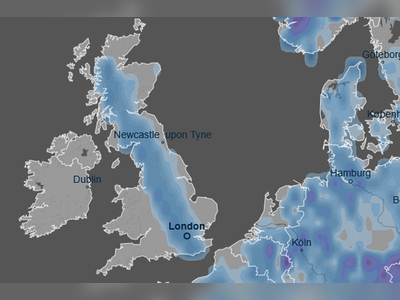Getty and Shutterstock Unite in AI-Driven Era: A New Chapter for Stock Photography
Getty and Shutterstock, leading stock photo companies, have announced a merger to form a $3.7 billion enterprise, targeting significant cost savings and gearing up to tackle the challenges presented by generative AI tools such as MidJourney and DALL-E.
In a daring shift within the stock photography sector, Getty Images and Shutterstock have announced their merger, forming a company worth approximately $3.7 billion.
This tactical decision, operating under the brand Getty Images, aims to fortify the merged entity against the rising challenges from generative artificial intelligence (AI) tools, such as MidJourney and DALL-E, which are beginning to disrupt the conventional stock photo model.
This merger will transform the stock photography domain by uniting two industry leaders.
Under the deal, Getty’s shareholders will possess 54.7% of the new company, while Shutterstock’s shareholders will retain 45.3%.
The combined entity will be listed under the ticker symbol GETY, with Getty CEO Craig Peters leading the company.
A key motivation for this merger is the swift growth of generative AI in content creation.
AI tools that generate images and videos from text descriptions are increasingly rivaling traditional stock photo services.
Tools like MidJourney and DALL-E enable users to produce high-quality visuals instantly, posing a challenge to the established model where users must pay or license stock images.
The merging companies believe that pooling their resources will enhance their competitive edge in an industry increasingly shaped by artificial intelligence.
The agreement is projected to achieve annual cost savings ranging from $150 million to $200 million, according to the companies’ statements.
As part of the merger, Shutterstock shareholders have several options: accept $28.80 per share, receive 13.7 Getty shares for each Shutterstock share, or a mix of 9.17 shares plus $9.50 in cash per share.
This variety of options is designed to accommodate different investor preferences, while the company’s new structure will heavily favor Getty’s ownership.
While the deal still awaits regulatory approval, the stock market reaction has been positive.
Following the announcement, Shutterstock’s shares rose by 26.5%, and Getty’s shares surged by 50.2% before the market opened.
However, both companies have seen declining stock prices over the last four years, attributed to the growing use of mobile phone cameras, diminishing the need for conventional stock photo collections.
The merger’s timing is critical as the stock photography industry contends with a shifting market.
Though traditional stock photo services have relied on extensive libraries of images and videos, the advent of generative AI threatens to render these services obsolete for specific applications.
For instance, AI tools like DALL-E now allow users to create intricate, personalized images in seconds based on straightforward text prompts, generating a new wave of competition for established firms.
Despite these hurdles, Getty and Shutterstock remain optimistic about their future.
By uniting their strengths and adapting to the changing landscape, they aim to retain their positions as leading figures in the stock photo industry.
Moreover, they will likely explore incorporating AI technology into their own platforms, leveraging both traditional stock photography and state-of-the-art AI capabilities.
This merger highlights a broader trend in the media and technology sectors where companies are consolidating to tackle AI’s disruptive potential.
As generative AI tools advance, their ongoing impact on industries dependent on traditional creative content, including stock photography, remains to be seen.
For now, Getty and Shutterstock are wagering that their merger will deliver the scale and resources needed to succeed in an AI-driven future.
This tactical decision, operating under the brand Getty Images, aims to fortify the merged entity against the rising challenges from generative artificial intelligence (AI) tools, such as MidJourney and DALL-E, which are beginning to disrupt the conventional stock photo model.
This merger will transform the stock photography domain by uniting two industry leaders.
Under the deal, Getty’s shareholders will possess 54.7% of the new company, while Shutterstock’s shareholders will retain 45.3%.
The combined entity will be listed under the ticker symbol GETY, with Getty CEO Craig Peters leading the company.
A key motivation for this merger is the swift growth of generative AI in content creation.
AI tools that generate images and videos from text descriptions are increasingly rivaling traditional stock photo services.
Tools like MidJourney and DALL-E enable users to produce high-quality visuals instantly, posing a challenge to the established model where users must pay or license stock images.
The merging companies believe that pooling their resources will enhance their competitive edge in an industry increasingly shaped by artificial intelligence.
The agreement is projected to achieve annual cost savings ranging from $150 million to $200 million, according to the companies’ statements.
As part of the merger, Shutterstock shareholders have several options: accept $28.80 per share, receive 13.7 Getty shares for each Shutterstock share, or a mix of 9.17 shares plus $9.50 in cash per share.
This variety of options is designed to accommodate different investor preferences, while the company’s new structure will heavily favor Getty’s ownership.
While the deal still awaits regulatory approval, the stock market reaction has been positive.
Following the announcement, Shutterstock’s shares rose by 26.5%, and Getty’s shares surged by 50.2% before the market opened.
However, both companies have seen declining stock prices over the last four years, attributed to the growing use of mobile phone cameras, diminishing the need for conventional stock photo collections.
The merger’s timing is critical as the stock photography industry contends with a shifting market.
Though traditional stock photo services have relied on extensive libraries of images and videos, the advent of generative AI threatens to render these services obsolete for specific applications.
For instance, AI tools like DALL-E now allow users to create intricate, personalized images in seconds based on straightforward text prompts, generating a new wave of competition for established firms.
Despite these hurdles, Getty and Shutterstock remain optimistic about their future.
By uniting their strengths and adapting to the changing landscape, they aim to retain their positions as leading figures in the stock photo industry.
Moreover, they will likely explore incorporating AI technology into their own platforms, leveraging both traditional stock photography and state-of-the-art AI capabilities.
This merger highlights a broader trend in the media and technology sectors where companies are consolidating to tackle AI’s disruptive potential.
As generative AI tools advance, their ongoing impact on industries dependent on traditional creative content, including stock photography, remains to be seen.
For now, Getty and Shutterstock are wagering that their merger will deliver the scale and resources needed to succeed in an AI-driven future.















